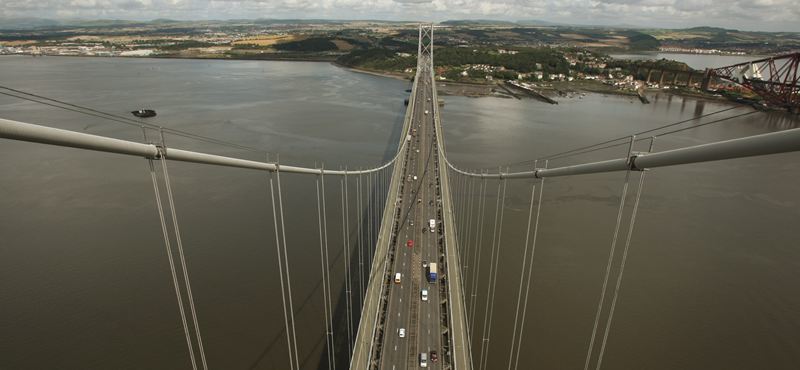Forth Road Bridge chiefs must examine the cable anchorages to ensure their long-term safety, experts have concluded.
The recommendation is contained in a new report due to go before members of the Forth Estuary Transport Authority (FETA) later this week.
FETA confirmed earlier this year it plans to spend £7.5 million on digging down to the anchorages at the South Queensferry end of the bridge.
Its engineers want to make sure moisture hasn’t got into the chambers and corroded the steel strands that hold the concrete filled tunnels together.
The decision followed the discovery of documents that highlighted problems encountered during the construction of the bridge in the 1960s. But FETA brought in a team of experts to assess whether the year-long project really is necessary before work begins.
The peer review panel, inclu-ding Bill Valentine, Transport Scotland’s chief bridges engineer, has issued its findings.
The experts agreed:FETA has to carry out an intrusive inspection of the anchorages, by excavating down to inspect the pre-tensioning strands. The checks will give the bridge authority sufficient confidence to either rule out the issue of corrosion altogether, or to consider suitable remedial actions. The process of assessing risks to users of the bridge and determining the best method of investigation has been advanced in a timely and thorough manner. There is no current and direct evidence that the bridge is in any way unsafe. Rather, the investigation is the only effective way to deal with concerns over the longer-term integrity of the anchorage strands. Carrying out the investigation will give FETA the ability to carry out a proactive assessment of the safety of the bridge, rather than having to react in an ad-hoc manner. Doing nothing is not a viable option.The panel also recommends a monitoring system should be installed to detect future corrosion within the anchorages, but has advised against full scale load-testing of the anchorage sockets and that cutting post-tensioning strands for sampling and testing should only to be considered as a last resort.
Their report means FETA can now start to look for a contractor to carry out the work.
The project is due to start in the autumn of next year, but it will be at least 2013 before even the earliest findings are known.
FETA is only planning to dig down to the anchorages at South Queensferry as the ground conditions there are poorer and the accounts of construction reveal there were more problems on that side of the bridge.
The papers, which came to light in 2005, highlighted the early depletion of galvanising on the steel pre-tensioning strands that hold the concrete in the anchorages together.
Barry Colford, FETA’s chief engineer and bridgemaster, welcomed the panel’s findings.
He said, “Our intention now is to press ahead with the investigation. It is the only way to deal with long-term concerns over the structural integrity of the anchorages.
“Excavating down to expose the steel will allow us to assess the current strength of the anchorages and will help in the difficult task of estimating future strength.
“Depending on the findings, challenging engineering decisions may have to be taken. But it must be stressed there is no direct or current evidence the bridge is in any way unsafe.
“Frequent inspections are carried out to monitor for movement within the anchorage chambers and no signs of distress or movement have been recorded to date.”
